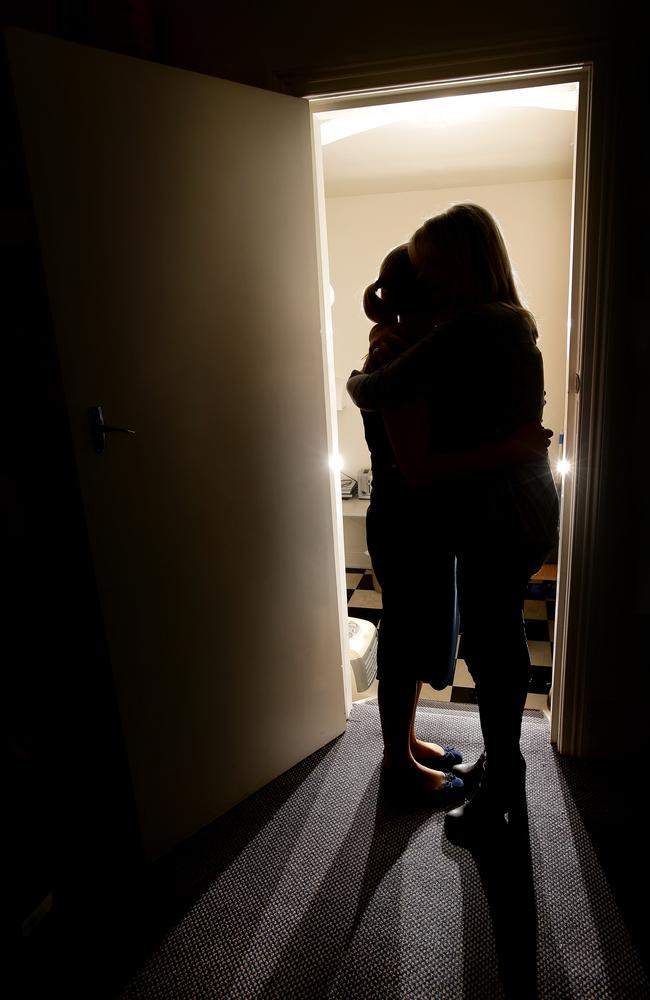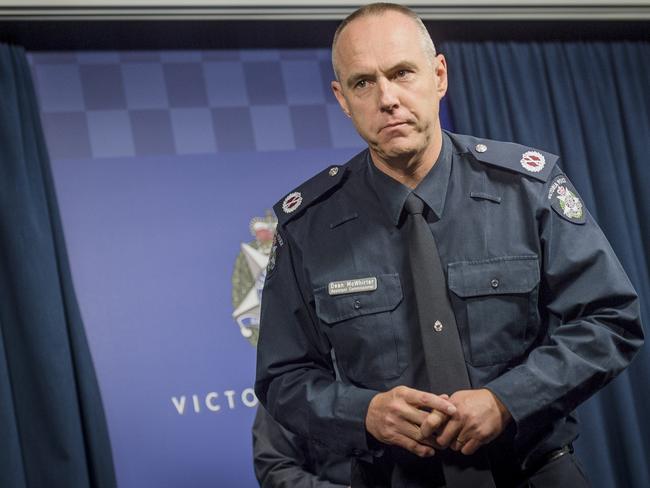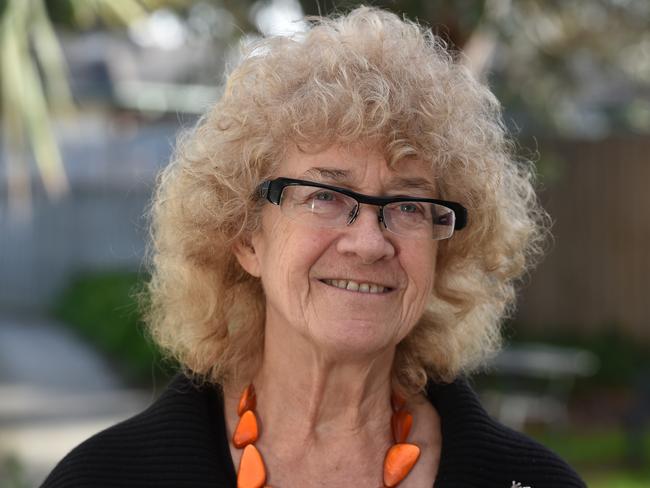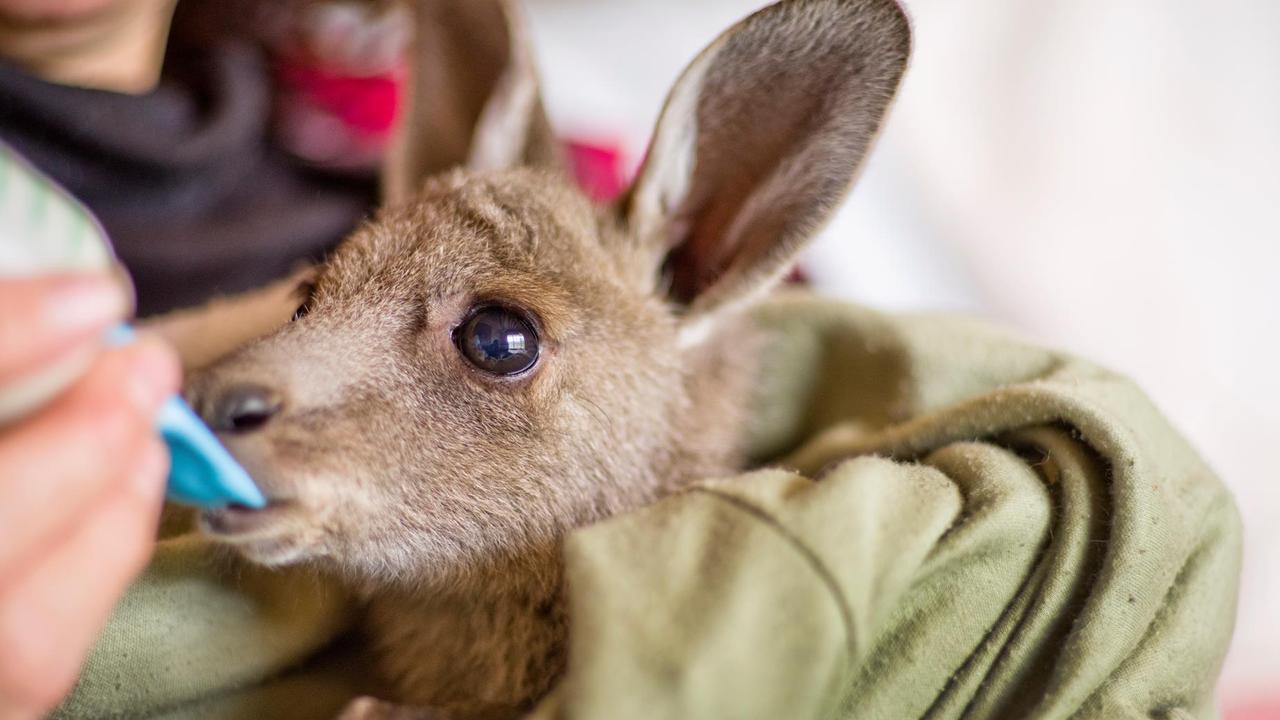Sexual assault in Victoria: Where’s the justice?
TRAUMA from sexual assault can smash every aspect of a victim’s life, but almost all perpetrators can expect to get away with it. Until now.

VIC News
Don't miss out on the headlines from VIC News. Followed categories will be added to My News.
IT IS a disgraceful statistic — up to 99 per cent of sexual assault and rape offences escape criminal conviction in Victoria.
Only a fraction of offences ever get to court, and for those victims who do pursue criminal justice many drop out when they realise there is a real risk the court process will traumatise them again.
And new crime statistics, released this month, show reports of sexual assault are rising significantly; in four years they have almost doubled. Yet people such as the well-educated and driven parents of the 14-year-old girl allegedly gang-raped in Geelong in 2015, who were determined to see justice happen, were weeded out by a system they were warned could “brutalise” their child.
Despite calls for more justice for victims by advocates including former attorney-general Rob Hulls, if your wife, girlfriend, sister or daughter — or you — are raped or sexually assaulted the message from the community via the lack of a justice outcome is often “suck it up”.
Mr Hulls says sexual assault victims are being failed on a grand scale by the traditional “adversarial” court system.
“In many areas, and sexual assault is one of them, the traditional adversarial system has passed its use-by date and is not serving victims,” says Hulls, who is director of RMIT’s Centre for Innovative Justice.
His 2014 report, Responses To Sexual Offending — Pathways to Better Outcomes for Victims, Offenders and the Community, found the rate of conviction is “as low as, and potentially lower than one in 100”.
“We say victims need more choice in the pursuit of justice and need a suite of options in which they can identify paths which ... can offer opportunities for them to tell their stories, have the harm acknowledged and have a say in the outcome,” he says.
Hulls consulted courts and took his report suggesting restorative justice conferencing, which “puts power back in the hands of and helps repair harm to victims”, to all Australian jurisdictions. He took it to the then Abbott government and “met with a number of attorneys (general) and their senior bureaucrats”.
The ACT was receptive, but “a lot took the view this is too politically charged”, says Hulls.
Melbourne former private school girl Lisa is a dramatic example of what this revolutionary form of justice can achieve. Before her attacker agreed to go through restorative justice with her, Lisa was “a shell of a person” according to mother Jacqui.
Of 16 disturbed behaviours the once “vibrant, free-spirited and carefree” girl developed after being sexually assaulted, needing to repeatedly spit on the pavement as she walked down busy shopping streets was one of the more confronting.
At 18, she came to after a party with a trusted male friend moving on top of her. She stuffed the memory down for 12 months until she saw him again — then had a catastrophic breakdown.
Lisa has no memory of how she got out the back of the cafe she was in when she saw her attacker. She “blacked out” and was found cowering behind dumpsters.
She developed extreme Obsessive-Compulsive Disorder, anxiety and an eating disorder that shrank her weight to just 45kg.

She became so terrified of anything dirty she could not inhale air possibly exhaled by someone else.
“I used to not be able to breathe at certain times,” Lisa says, 4½ years on and hugely healthier after going through restorative justice sessions run by the South Eastern Centre Against Sexual Assault.
“I was so ridiculously obsessed with germs there were times when I would almost faint from holding my breath. Or if I did breathe in I would have to spit.”
She spent two stretches in a Melbourne psychiatric hospital to treat the illness her psychiatrist linked to sexual assault trauma.
Despite the assault trauma smashing every area of normal life, Lisa was among the vast majority of victims who do not feel they can get through a trial. Like 70 per cent of rape or sexual assault victims, Lisa’s attacker fell into the “friend or family member” category and, like many of those victim-survivors, she did not want friendship groups divided or nasty gossip fed.

Eventually, Lisa’s psychiatrist referred her to SECASA’s pioneering restorative justice facilitator, Carolyn Worth, who has been informally running conferencing between victims and perpetrators for years and who launched a formal, Monash University-monitored program last year.
The veteran sexual assault worker says when she first heard about restorative justice, she was sceptical. “Years ago, if you’d asked me I would have said ‘no way am I doing that’,” says Worth. She understands concerns that if the process is done inadequately the victim could be further traumatised by her attacker.
But she has seen first-hand what analysis by Dr Liz Bishop of Monash University’s Michael Kirby Institute for Public Health and Human Rights found after looking at 13 formal clients: “The victim or the victim’s family have spoken of the power of this opportunity ... it has given them, in part or in whole, what they were seeking.”

Rape and Domestic Violence Services Australia executive officer Karen Willis has seen every trick in the book used to bring victims undone during sexual assault court cases, and says restorative justice is “worth considering”.
“There are pros and cons,” she says. She is concerned that victims from diverse cultural backgrounds may not have the capacity to fully participate and communicate.
Willis says that in 25 years supporting victims she has observed Rob Hulls’ 1 per cent conviction rate statistic to be accurate. She has seen evidence of physical damage on a victim used in an attempt to discredit them.
Trauma’s ability to jumble the sequence of events in victims’ minds is also used as a weapon, says Willis.
She says it is a positive sign that sexual assault reporting numbers are on the rise: “More are reporting than ever before, women are saying, ‘This is a crime, I don’t have to put up with it’.
“That’s terrific, and there is a massive interest in people seeking services for sexual assault.”
Victoria Police is also trying to improve the court experience for victims by launching a myth-busting education campaign for the legal sector and judges about misconceptions of how victims “should” present.
Assistant Commissioner Dean McWhirter and the Australian Institute of Family Studies have formulated the soon-to-be-released package to dispel 15 misconceptions, including that victims will recall the assault or rape in a sequential, specific and coherent way, that rape is done by strangers and that victims will want to report it straight away.

POLICE TO EDUCATE JUDICIARY ON RAPE VICTIMS
“It is frustrating that a lot of people are getting away with it; we need to be very clear for victims to get the support they want that we will always respond to their needs first.’’
He encourages victims to report sexual offences and is pleased to see in the past five years report numbers have increased by 4000 to roughly 13,000 — of which 34 per cent were rape allegations — in 2016. McWhirter says current national and international data suggests sexual offence conviction rates now are more likely to be up to between 5 and 12 per cent than as low as the 1 per cent others stand by. The Crime Statistics Agency does not correlate conviction rates against report rates.
He says the numbers of false reports of rape or sexual assault are negligible.
Dr Nicola Henry, a sexual violence researcher at RMIT, agrees that myths about who is a “real rapist” and who is a real victim are still powerful deterrents to victims coming forward.
She says there is still an unhealthy distinction between “real rape”, perpetrated by a stranger while a victim is sober and dressed in modest clothes, and “acquaintance rape”, in which victims’ trauma may be minimised by others.
“A ‘real rape’ scenario gets far more serious attention than when a person knows their attacker (a friend, someone they have dated or met at a party or bar),” she says. “There are myths about ‘deserving’ victims, such as if a person knows their attacker, was wearing a short skirt or drinking at a party that play into under-reporting.
“Victims are reluctant to report for fear of blame, of the justice system, even of family members finding it difficult to hear their daughter or sister has been the victim of sexual violence. There are so many negative stereotypes around sexual offences.”
Thankfully for Lisa, her loving mother, Jacqui, never doubted her — she had even voiced concerns about a too-intense interest in Lisa by the perpetrator. Jacqui has supported Lisa, now 23, through psychiatric treatment and the restorative justice sessions run by Carolyn Worth. She says the perpetrator “has stolen part of my family’s life — his actions that night have robbed our whole family”.

She says from the instant she heard Lisa’s voice after the first of Worth’s sessions in April, she knew her daughter was going to be able to get her life back. About three weeks ago Lisa finally received the handwritten letter of apology she requested from her attacker. She and Worth attest to his sincere and obvious remorse. Lisa is back at work at a job kept open for her, and is studying for a professional qualification. She is gradually easing off her many psychiatric medications.
She says she still has “bad days”, but her mother is eternally grateful to Carolyn Worth for the huge change she has seen in her daughter. Taking Lisa’s hand in the cafe where her symptoms all began, she says, “I’ve got my little girl back”.
NEW PROCESS BRINGS POWER TO SURVIVORS
RESTORATIVE justice is not a replacement for the criminal justice system but is available for female and male survivors who have decided they do not wish to go ahead with charges and a conventional court case, or whose case has “fallen out” of the criminal process.
It is a “victim-survivor-driven model”, and not an adversarial justice model as used in conventional court cases. Police and courts will not usually be involved.
South East Centre Against Sexual Assault mediator Carolyn Worth describes the world-first sexual assault restorative process she is pioneering — and which is this year being assessed by the Michael Kirby Institute for Public Health and Human Rights at Monash University — as a way to “bring a couple of people or a family group together so they can work out what harm was caused and how you can mitigate the harm and make it easier to move on in their lives”.

Worth, whose program has been formally under way since 2016, has strict criteria on which she will accept people for restorative justice sessions. People are often referred by counsellors.
Perpetrators or alleged offenders need to agree something sexual happened that was inappropriate. Worth will not accept sessions if the perpetrator is not willing to be respectful.
Each person spends an hour alone with the facilitator prior to the collective session(s) to discuss what they hope to get from the process and what they think would be useful to discuss.
Victims have the chance to express the impact on them of the sexual assault and may request a formal apology and other conditions around future interaction with the perpetrator, particularly if they have shared friends or family.
Dr Liz Bishop, of the Michael Kirby Institute, said in April that of 13 completed restorative justice sessions assessed by the institute so far, “we’ve had some amazing responses from the people who have been through the process; both the perpetrator and the victim or the victim’s family have spoken of the power of this opportunity ... that it has given them in part or in whole what they were seeking”.
To contact SECASA, phone 9928 8741 for administration, or in a crisis, phone 9594 2289. secasa@monashhealth.org
secasa.com.au


